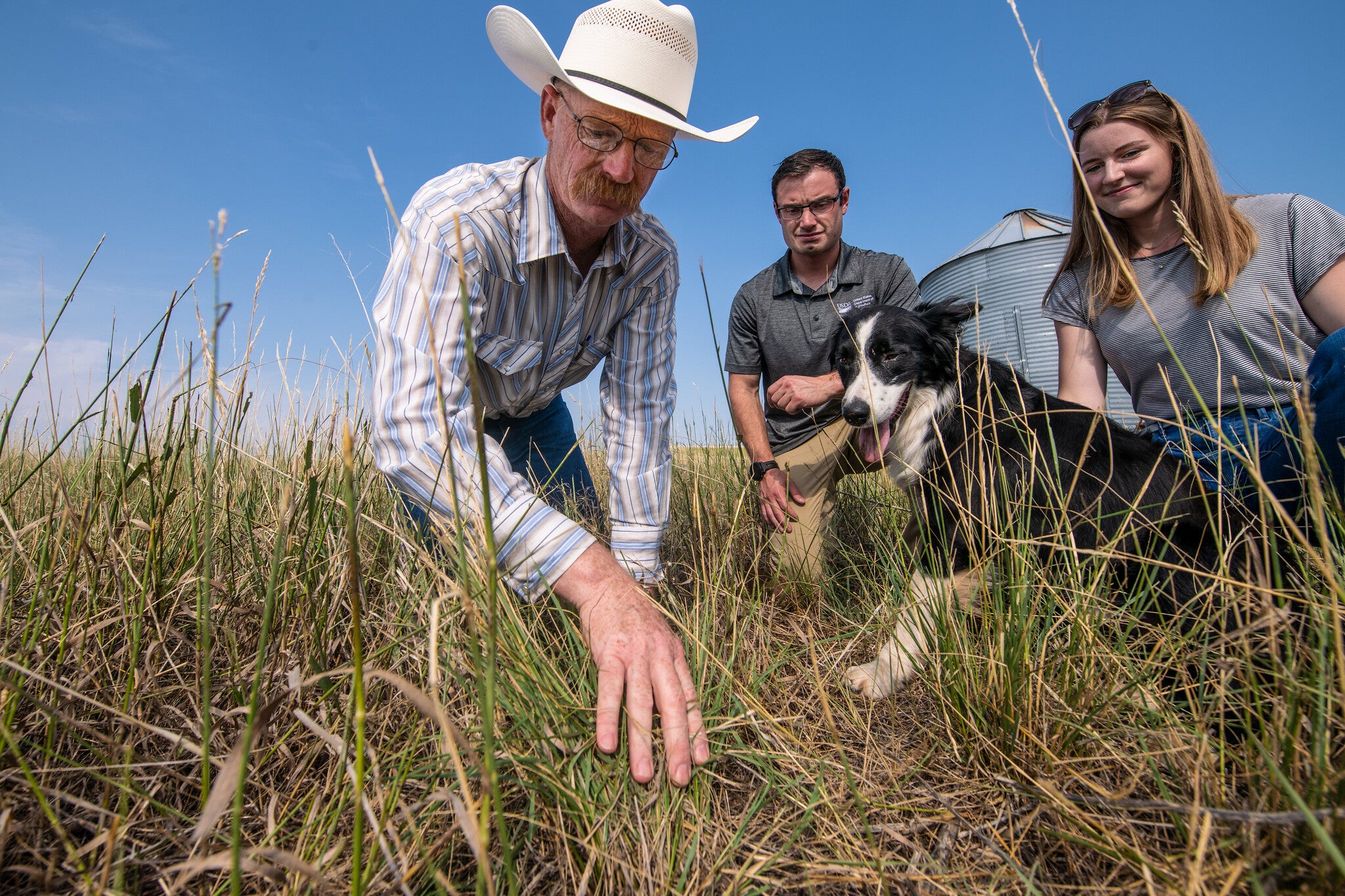The U.S. is on the brink of making a historic investment in farmers, ranchers and rural communities, helping them cut emissions, prepare for climate impacts that are already here, and create good jobs along the way. The Inflation Reduction Act — which passed the U.S. Senate and House of Representatives, and which President Biden is expected to sign into law in the coming days — will direct about $20 billion toward agricultural conservation programs and nearly $14 billion toward clean energy for rural America.
To stabilize the climate and maintain a safe, vibrant planet, we need to transition to climate-smart agriculture and clean energy. This bill will expedite efforts already underway and jumpstart new ones.
Here are the most impactful climate investments in rural America.
1. Opens the door for more farmers to use conservation programs
U.S. Department of Agriculture conservation programs are oversubscribed. On average, three farmers want to participate for every slot available. With this additional funding, USDA can hold the door open a little bit wider, letting more farmers participate in conservation programs. These are farmers who have already bought in to the value of conservation but need financial assistance or technical assistance to make the transition. This increased funding should get climate-smart practices on the ground quickly.
Just as important, climate mitigation is now a stated priority for these conservation programs, with guidance in the bill to prioritize practices that reduce methane and nitrous oxide and help sequester carbon in soils. These programs will continue to prioritize other vitally important conservation outcomes like clean water when reviewing farmer applications, but now, climate change will be on the list too.
2. Creates a strong foundation for the next farm bill
The farm bill — a mammoth bill that comes up every five years and determines much about what we eat and how it’s grown — is the largest source of funding for conservation on private lands. It’s a powerful vehicle for cutting emissions and building resilience nationwide.
Inflation Reduction Act funding layers on top of existing conservation program funds authorized by the 2018 farm bill. That means that as Congress writes the 2023 farm bill, funding for the conservation title is assured. Instead of focusing on preserving the amount of conservation funding available, energy can be directed toward creative ideas to advance climate-smart farming.
This new conservation funding provides enormous potential for agricultural producers and environmentalists to work together on incentive-based solutions that are durable and equitable.
To fight and prepare for climate change, the U.S. makes a historic investment in rural America Share on X3. Measures climate progress to improve future investments
The Inflation Reduction Act includes $300 million for USDA’s Office of Energy and Environmental Policy to set up a program to measure the climate impact of conservation programs managed by the Natural Resources Conservation Service. These funds can be used for aggregating and analyzing existing data or conducting new research to improve on-farm and regional measurement, reporting and verification.
This is the decisive decade for knowing what climate future we’re locked into. Having dedicated funds for measuring progress is incredibly important for farmers, ranchers, taxpayers and the climate. The results will help shape future investment decisions.
4. Invests in rural clean energy for jobs growth and pollution cuts
One of the most impactful portions of the Inflation Reduction Act, for both rural economies and climate change, is the $14 billion investment in helping farms and rural electric coops transition to clean energy.
This will create an estimated 90,000 good jobs in rural communities, which have seen thousands of jobs migrate to cities in recent decades. This won’t reverse the trend on its own, but it will jumpstart economic revitalization and opportunity. It’s also one of the largest emissions reductions opportunities in the bill and will make rural electric grids more reliable and resilient.
These investments in rural America show that the U.S. is serious about reducing climate risks and expanding opportunities to be part of the climate solution. Over the coming decades, we will all benefit from lower pollution and more resilient economies and food supplies.










